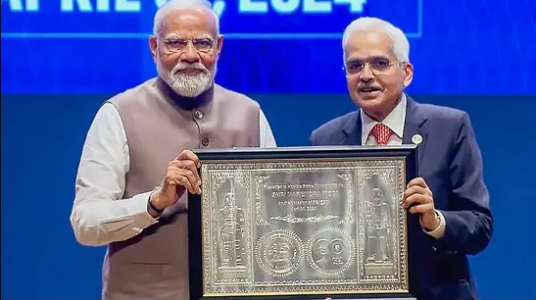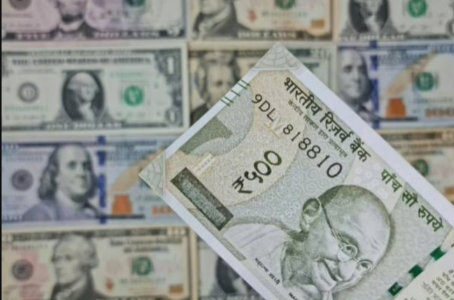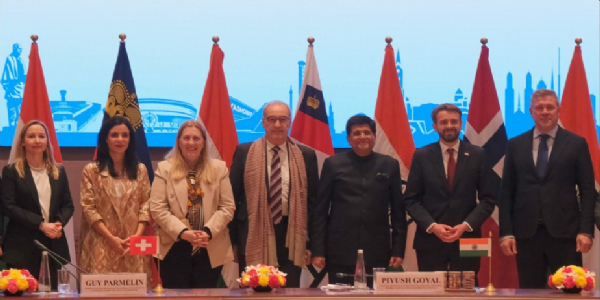"India achieved in just 6 years what would have taken about five decades": World Bank lauds India's Digital Public Infrastructure
World Bank, in a document lauding India’s Digital Public Infrastructure approach, noted that India has achieved in just 6 years what would have taken about five decades.
Total Views | 10
New Delhi, Sept 8: In a significant development, the World Bank has lauded India’s Digital Public Infrastructure saying that "It had a transformative impact, extending far beyond just financial inclusion". The international financial institution in a document lauding India’s DPI approach noted that India has achieved in just 6 years what would have taken about five decades.

The World Bank document prepared ahead of the big G20 Summit in New Delhi highlighted the key measures taken by the Modi government and the pivotal role of government policy and regulation in shaping the Digital Public Infrastructure (DPI) landscape.
India has developed some of the finest digital public goods infrastructure which could change lives the world over. UPI, Jan Dhan, Aadhar, ONDC, and CoWin are some of the examples.
PM Modi on World Bank's report
Responding to the World Bank's report on social media platform X, PM Narendra Modi responded to the report by saying that it is a testament to the "rapid progress and innovation" in India.
"India's leap in financial inclusion, powered by Digital Public Infrastructure! A G20 document prepared by the World Bank shared a very interest point on India's growth. India has achieved financial inclusion targets in just 6 years which would otherwise have taken at least 47 long years. Compliments to our robust digital payment infrastructure and the spirit of our people," he said.
India's leap in financial inclusion, powered by Digital Public Infrastructure!
— Narendra Modi (@narendramodi) September 8, 2023
A G20 document prepared by the @WorldBank shared a very interest point on India's growth. India has achieved financial inclusion targets in just 6 years which would otherwise have taken at least 47…
'The JAM Trinity'
The World Bank underscores the significance of the "JAM Trinity" (Jan Dhan, Aadhar, Mobile), which combines universal bank account access, Aadhaar identification, and mobile connectivity. This triumvirate has propelled India's financial inclusion rate from 25 percent in 2008 to over 80 percent of adults within the past six years. The World Bank estimates that this journey was shortened by up to 47 years thanks to the DPIs.
The World Bank not only acknowledged the role of DPIs in this leap forward but also emphasised the importance of other ecosystem variables and policies that have built upon the availability of DPIs.
"While DPIs’ role in this leapfrogging is undoubtable, other ecosystem variables and policies that build on the availability of DPIs were critical. These included interventions to create a more enabling legal and regulatory framework, national policies to expand account ownership, and leveraging Aadhaar for identity verification,” the World Bank document said.
Since its launch in 2014 during Prime Minister Narendra Modi's tenure, the Pradhan Mantri Jan Dhan Yojana (PMJDY) has seen remarkable growth. The number of PMJDY accounts tripled from 147.2 million in March 2015 to 462 million by June 2022, with women owning a significant 56 percent of these accounts, totaling more than 260 million.
UPI-led transformation
The World Bank also acknowledged India's adept use of technology for direct benefit transfers to citizens and the utilization of UPI for retail payments. The DPI in India has not only improved efficiency for private organizations but has also reduced complexity, costs, and time associated with business operations in the country, it said.
Unified Payments Interface (UPI), the country's smartphone-based fast payment system, has gained widespread popularity for retail digital payments. Its adoption is rapidly increasing, making it a cornerstone of India's digital financial landscape.
More importantly, the Indian government has been keen to extend the benefits of UPI beyond its borders. Several countries, including Sri Lanka, France, UAE, and Singapore, have partnered with India to explore emerging fintech and payment solutions.
Bharati Web






